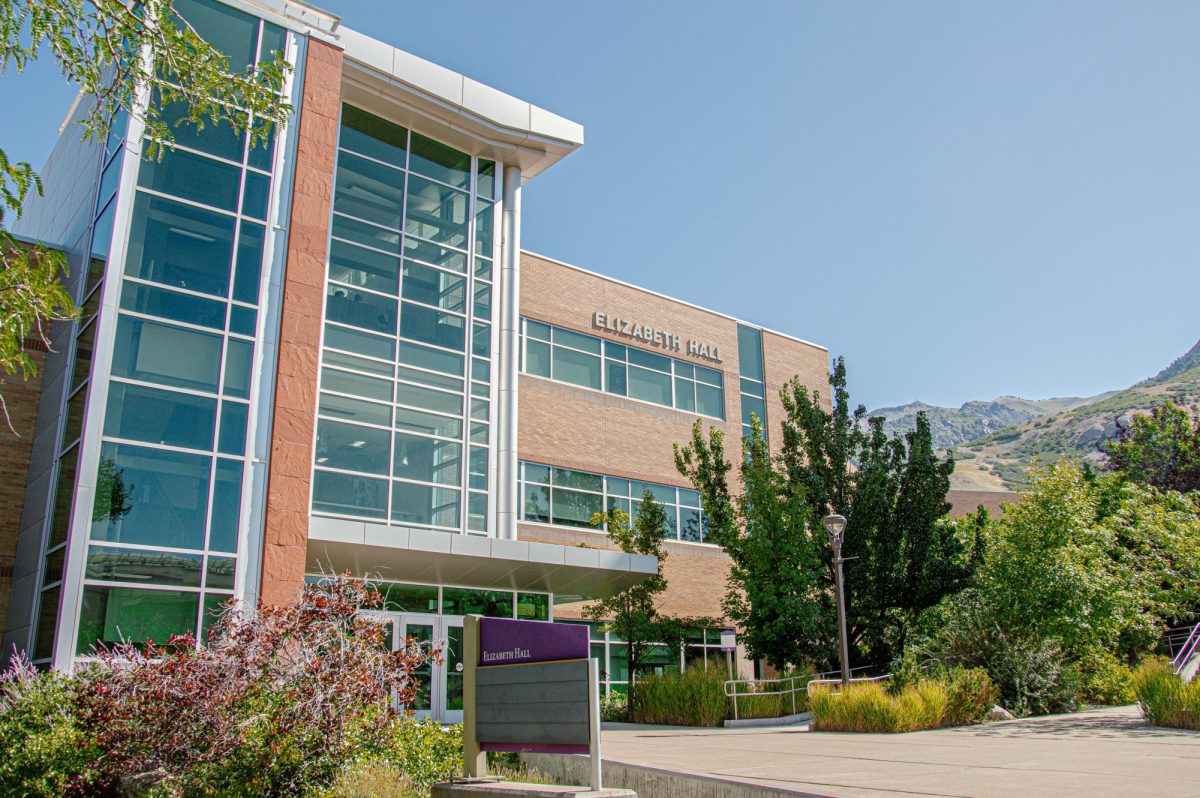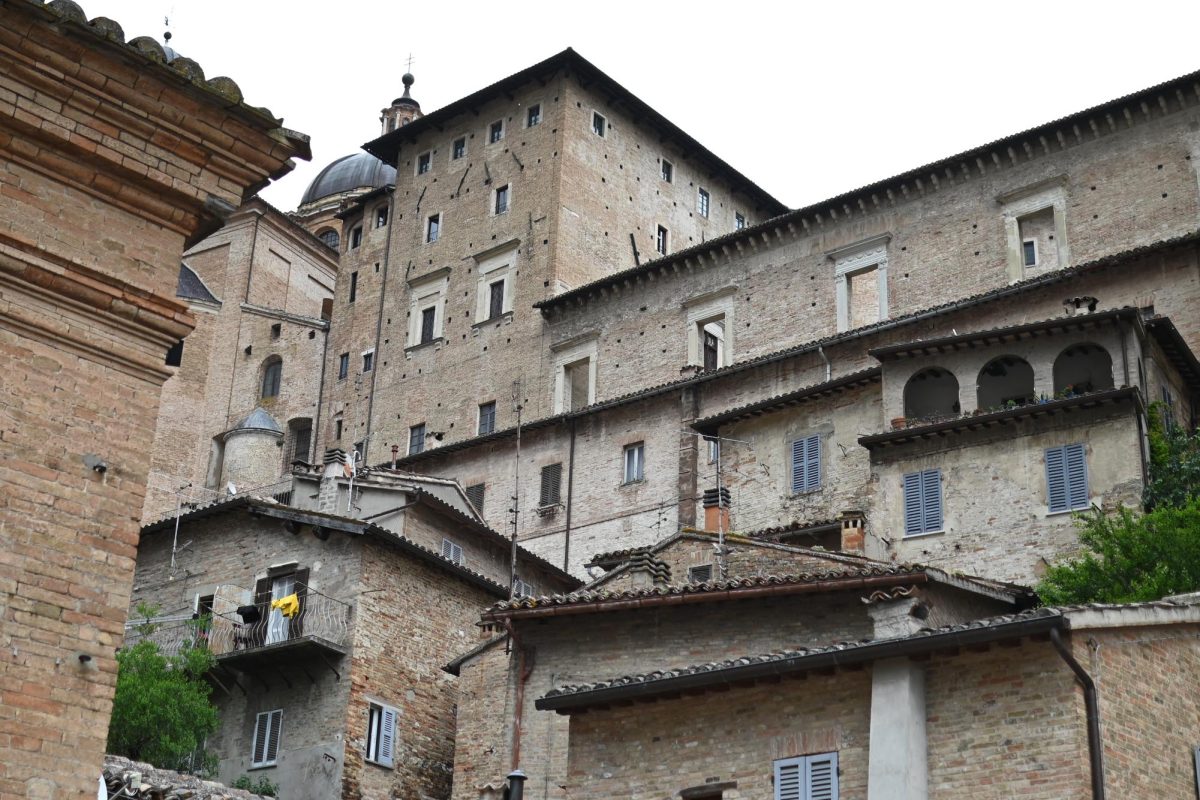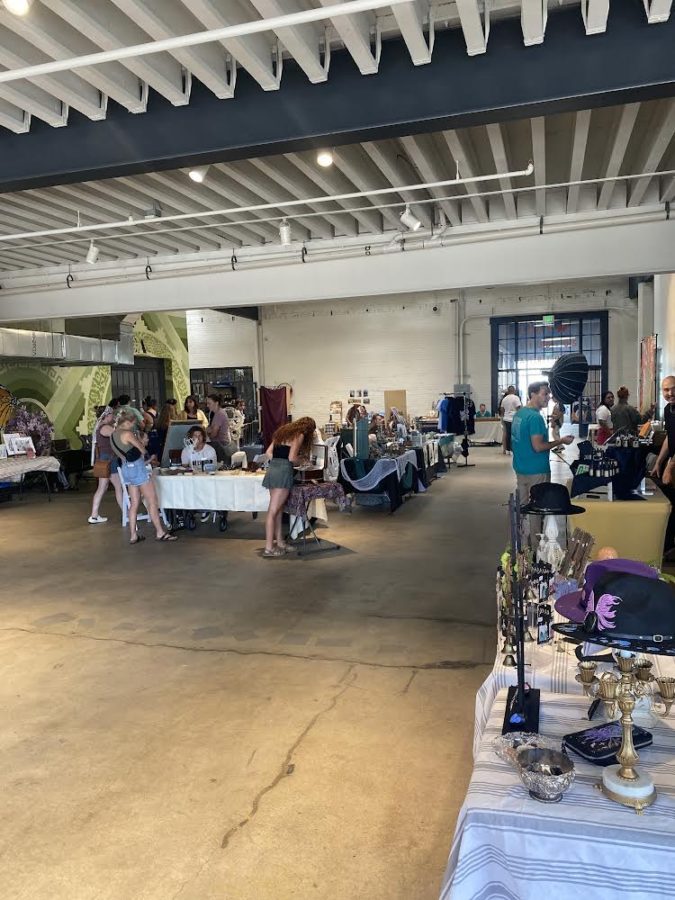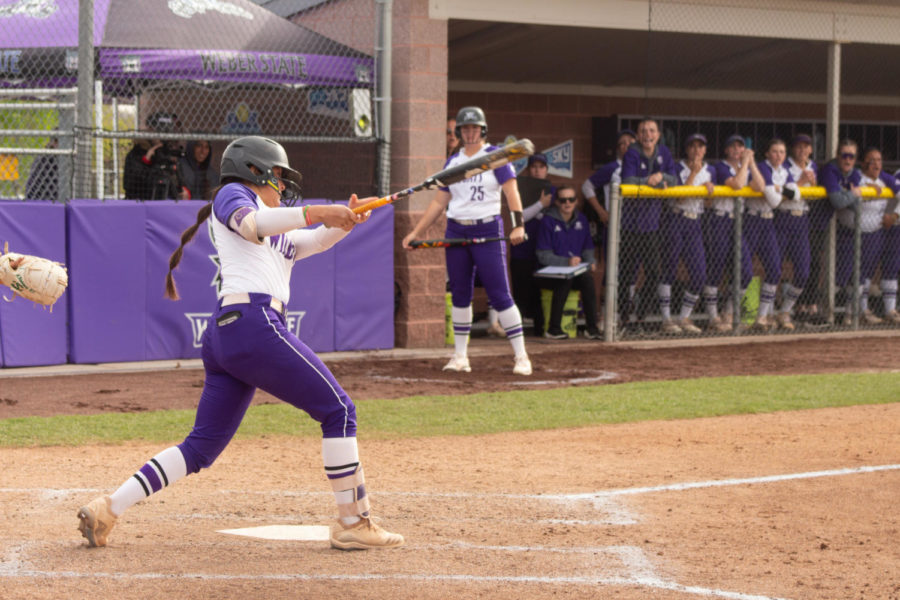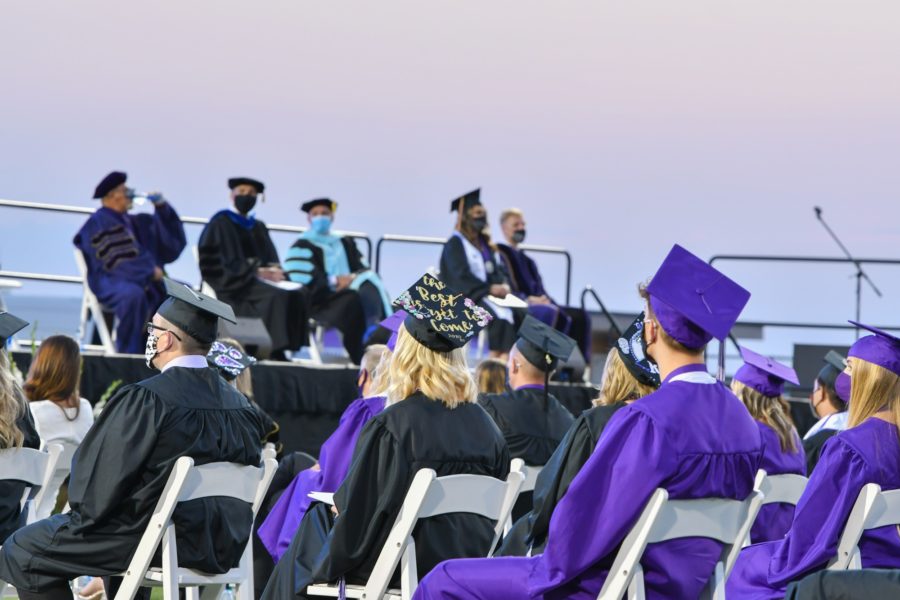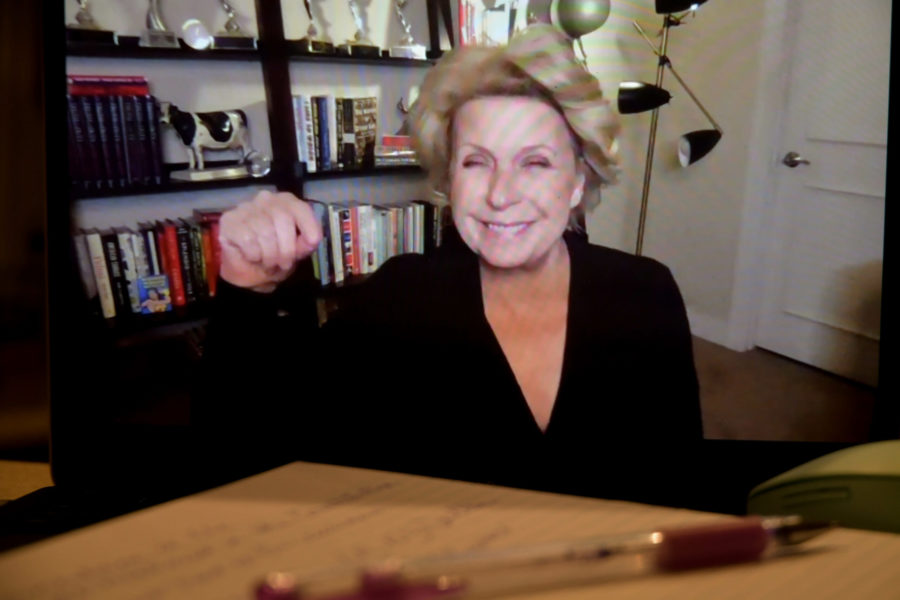The Conference Center in Salt Lake City sat devoid of attendees as members of The Church of Jesus Christ of Latter-day Saints around the state, country and world tuned in to watch the 190th semiannual General Conference remotely on Oct. 2 and 3.
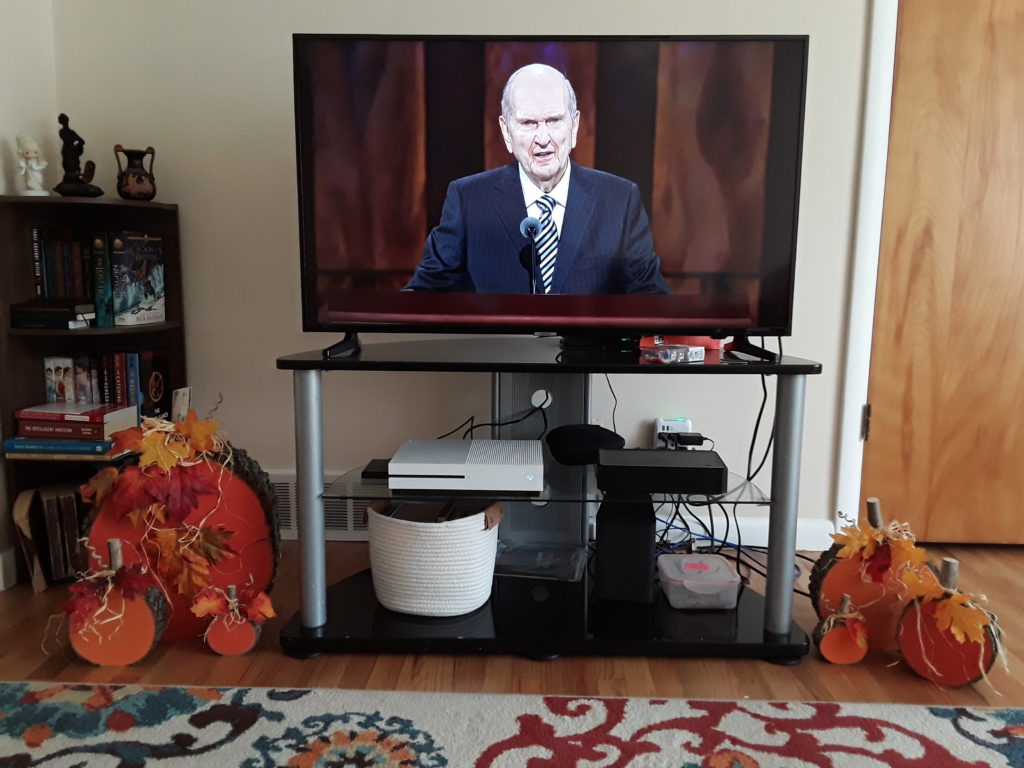
The church’s General Conference includes five two-hour sessions of talks, as well as some news and announcements, delivered by President and Prophet Russell M. Nelson, the 12 Apostles and other leaders in the church. The sessions are spaced out over the two days of the conference and held in the conference center located near church headquarters in Salt Lake City.
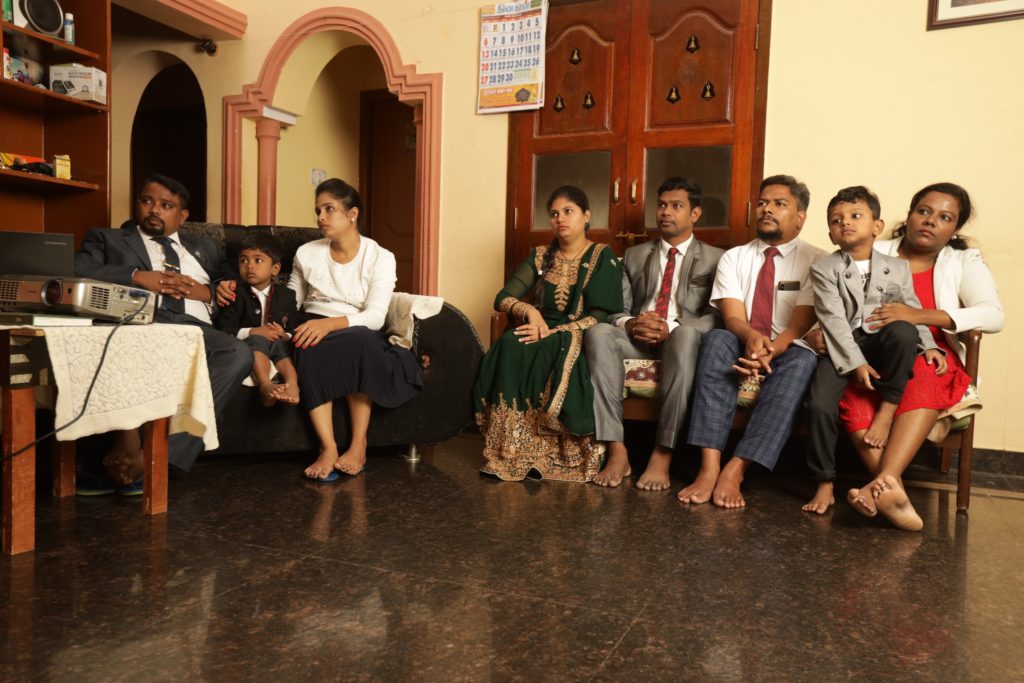
Usually, the conference center is surrounded by people wishing to attend in-person, and even some protesters, on conference weekends. However, due to COVID-19, the conference in April was the first to be held completely remote — only the speakers were allowed in the building, socially-distanced, and members watched live-streams and recordings of the sessions from their own homes.
Instead of live music from the Tabernacle Choir at Temple Square, recordings from previous years and sessions of conference were reused. The recent October sessions were held the same way.
In reality though, this wasn’t much different from normal. For years, General Conference has been available on TV, radio and online, so when the pandemic came, the church was prepared. Most members, like WSU Institute student Zoe Plowman, from Canada, are used to watching it from their own homes.
Richard Stuart, associate director of the WSU Ogden Institute of Religion, joked that the only real difference was that one couldn’t hear much laughter when a speaker made a joke — maybe just some quiet chuckles from the other leaders spaced out around the room.
The church has over 30,000 congregations in 196 countries and territories, making the remote broadcast a necessity — with or without the pandemic.
“I just love that the church is able to still broadcast general conference, and have a global conference around the world, in the midst of a pandemic,” Stuart said.
Though the conference didn’t change much, the church did have to make many changes to regular Sunday church services, temple service and other meetings.
In March, churches were closed and members were advised to continue Sunday worship in their homes.
Stuart, who had the virus himself at one point, said that it was hard to not have the in-person meetings like members were used to, and that going to church was missed.
However, he said that in a way there was more positive than negative — they were still able to continue worship at home and the quarantine meant that they spent more time together as family.
Of course, The Church of Jesus Christ of Latter-day Saints is not the only religion affected by the pandemic. All religions have had to change the way they worship to keep members of their congregations safe.
When the quarantine started in March, Ellen Keene, administrative assistant at the Trinity Presbyterian Church, said her church was able to continue posting weekly Sunday services on Facebook and enjoy a social coffee hour over Zoom. They did whatever they could to keep in contact.
On Oct. 3, they were able to meet for Sunday service in the parking lot of the church. Everyone stayed in their cars and wore masks, the pastor stood on the hill in front of the parking lot and broadcasted the sermon over the radio; attendees honked amens.
Keene said they had to cancel some of their service activities and programs that required money and people to run, like the drives for the Lantern House and Salvation Army.
“My biggest fear is the longer this goes on the more we will lose,” Keene said.
The experience has been similar for many other churches and religions in the Ogden area. The Rev. Vanessa Cato, rector of the Episcopal Church of the Good Shepherd, said they also had to close down at the beginning of the pandemic and post Sunday services online, which they continue to do.
Beginning in late summer they were able to hold some restricted Sunday services in the courtyard outside of their building. They can’t do anything inside the church building yet, but are starting to discuss and plan for the return to indoor worship, especially for Christmas.
Cato said they also had to scale back, adjust and even cancel some of their outreach ministry and service programs. For example, they had to cancel the Shepherd’s Bowl Community Lunch, but still prepare sack lunches for Youth Futures to pick up and distribute. Even so, Cato said she still feels sad that she can’t do more to help and serve.
“This has been, and will continue to be, a particularly stressful time in my ministry as a priest,” Cato said. “Indeed, to be honest, I feel overwhelmed and guilty at the same time because I am not able to be the pastor I want to be.”
Virtual worship and a slow return to in-person services is the theme for most churches, such as the First Presbyterian Church, with Minister of Word and Sacrament Jon Draskovic and the St. Paul Lutheran church with the Rev. Mark Christ.
Christ said they were able to reopen Sunday services in June by maintaining social distancing, taking temperatures and contact tracing, though they still continue to live stream the services and Bible studies for those who wish to stay home.
The Rev. Bruce Kolasch, pastor of the Elim Lutheran Church, said they were able to return to church at the beginning of September by maintaining social distancing, using pre-packaged communion, requiring face masks and taking temperatures. He shared a message of looking to the positive and remembering to be thankful.
“When many are struggling with depression and an overarching social anxiety of what lies ahead it is important to remember that there is always hope,” Kolasch said.
Some churches have not been able to return to their worship services at all. Geoffrey Russell, minister’s assistant at the Buddhist Church of Ogden, said all of their services and meetings have been suspended since March, though they hope to return in January if the COVID-19 situation improves.
“Buddhists believe in the interdependence of all sentient beings. As such, when anyone is suffering, we suffer as well,” Russell said. “This also makes us aware of our responsibility to do everything we can to avoid causing harm to others.”
On the other hand, the Transfiguration Greek Orthodox Church, with Parish Priest Father Mario Giannopoulos, continued their in-person worship services, though they still provide a live stream for those who wish to stay home.
Imām Mohammed Al-Tigar, president and chair of the Islamic Center of Kuwait in Utah, said the only activity they have been able to do since July is their Friday sermon and prayer, attendance requirements to which are very strict to CDC guidelines. However, they have to limit the number of attendees to 50 on a first come first serve basis.
Al-Tigar said it’s unfortunate that the pandemic continues and that people fight over it. He said he is still hopeful that one day the community will come together, put differences aside and work together toward a common goal of saving lives.
Heide Cottam, communications and leadership facilitator and chair of the Unitarian Universalist Church of Ogden, said they have been fully online for all of their services and activities since March, but it hasn’t stopped them from being fairly active and continuing their fundraisers and service.
She said that bringing church online actually helped them to become more inclusive – before, they were missing those people who couldn’t come to church for reasons such as distance and health issues.
Cottam said that the leadership of her church is now committed to continuing a hybrid in-person/online approach to worship.
“Being together in person is a beautiful thing, and I know we all are yearning for the time when we can meet again safely,” Cottam said. “This time has also shown us, though, that going back to ‘normal’ isn’t an option. There will always be — and always were — those who cannot be with us in person, and they will be a focus for us from this point forward.”






